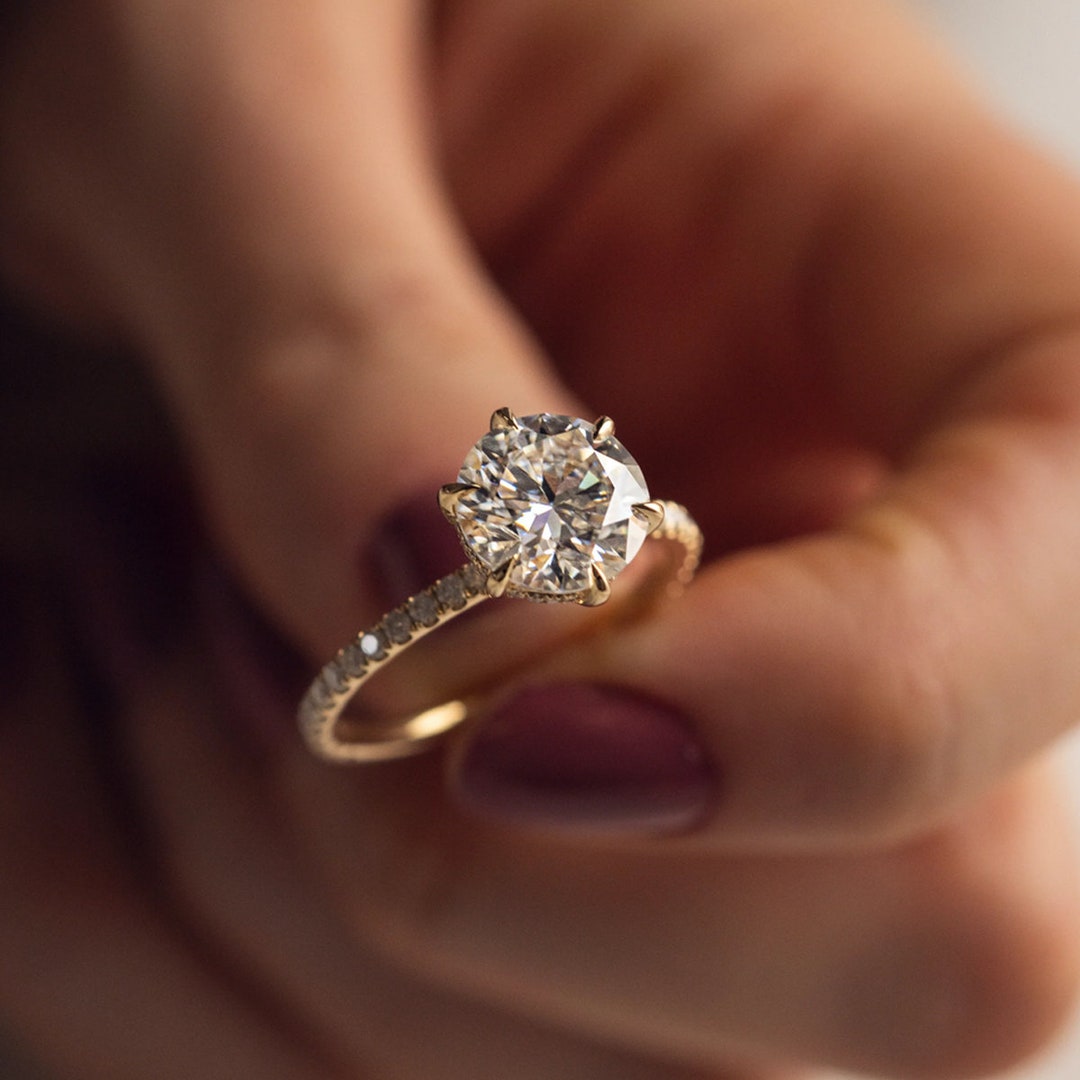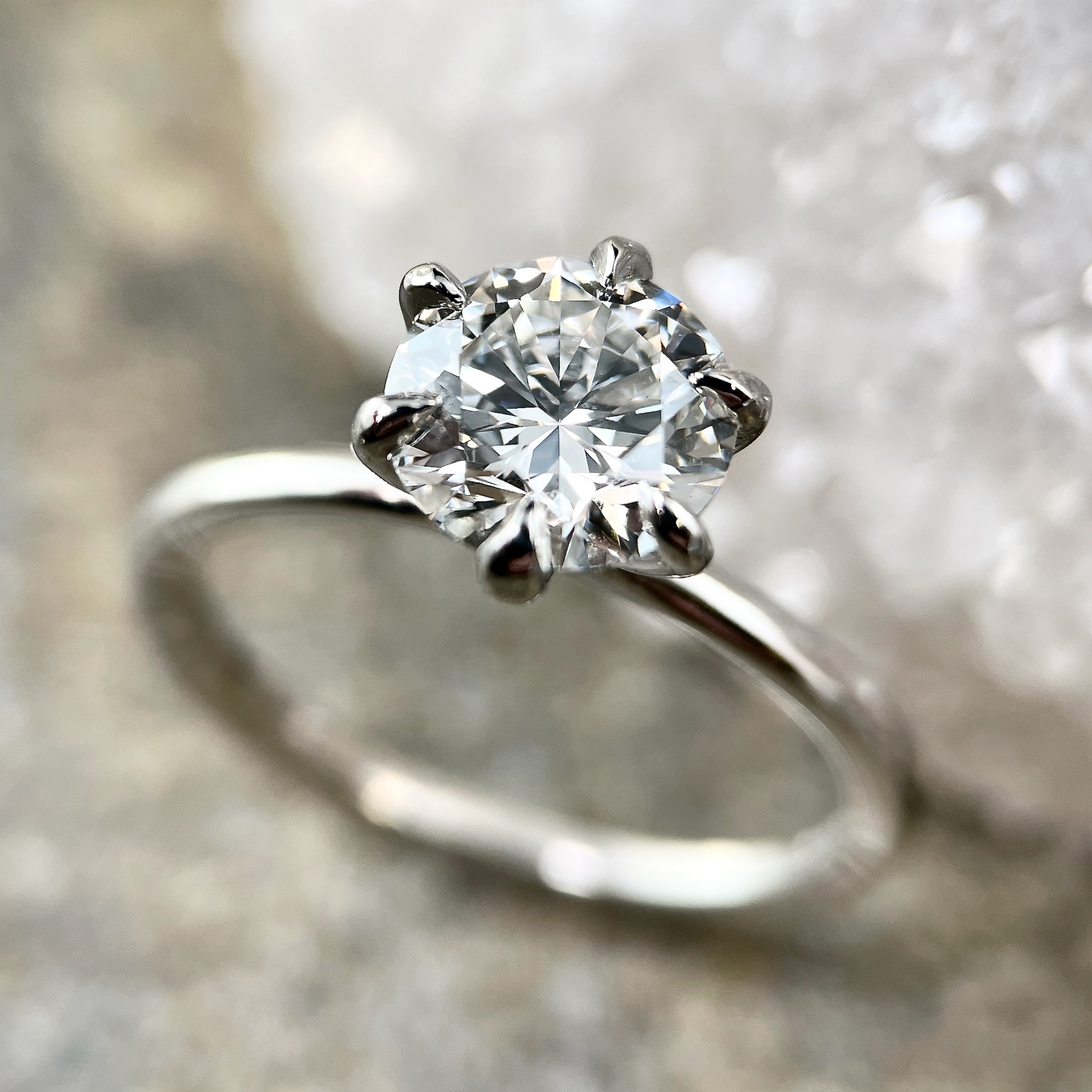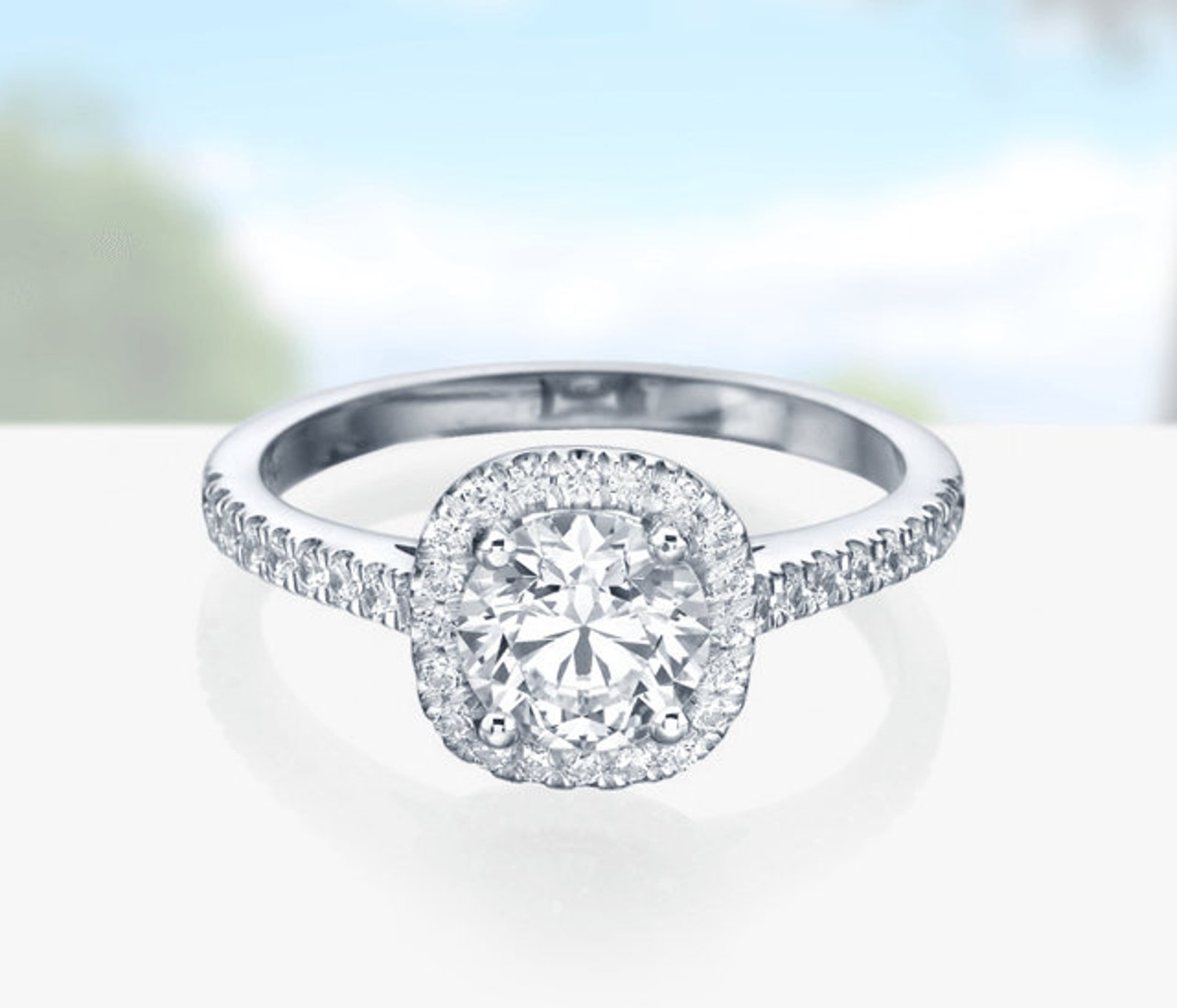solitaire lab grown diamond ring sets the stage for this enthralling narrative, inviting you into a world where timeless design meets modern innovation. These rings embody a perfect blend of classic beauty and ethical progress, making them a top choice for those seeking brilliance with a conscience.
Solitaire rings are iconic for their simplicity and focus on a single, stunning diamond. With advances in technology, lab grown diamonds have become virtually indistinguishable from mined stones while offering enhanced ethical and environmental benefits. From their physical traits to customizable settings and a range of prices, solitaire lab grown diamond rings are reshaping traditions and expectations for fine jewelry lovers everywhere.
Introduction to Solitaire Lab Grown Diamond Rings
Solitaire diamond rings have long been celebrated as timeless symbols of elegance and commitment. Defined by their single, striking center stone, solitaire settings have shaped the landscape of fine jewelry design for generations. Their minimalistic approach focuses all attention on the brilliance and beauty of the diamond, making them a classic choice for engagement rings and special occasions alike.
The arrival of lab grown diamonds has transformed the solitaire ring market, offering a modern alternative to traditional mined stones. Lab grown diamonds, created using advanced technology in controlled environments, possess the same physical and chemical properties as their natural counterparts. These diamonds are now central to a new generation of solitaire rings that blend innovation, ethics, and sophistication.
The main differences between mined and lab grown solitaire diamond rings lie in their origin, environmental impact, and value proposition. While both types of diamonds are visually and structurally identical, lab grown stones are produced without the extensive environmental disruption associated with mining. This distinction has made lab grown solitaires increasingly attractive to contemporary consumers seeking both beauty and conscience in their jewelry.
Features and Attributes of Lab Grown Diamonds
Lab grown diamonds are virtually indistinguishable from mined diamonds in terms of appearance and durability. Both are made of pure carbon arranged in a crystalline structure, resulting in exceptional hardness and light performance. The creation process involves either High Pressure High Temperature (HPHT) or Chemical Vapor Deposition (CVD), both of which yield real diamonds with precise control over quality and characteristics.
The unique benefits of lab grown diamonds extend beyond visual allure. Below are key advantages that distinguish them in the jewelry market:
- Significantly lower environmental impact compared to mining
- Greater affordability for larger carat weights
- Guaranteed conflict-free sourcing
- Identical sparkle and brilliance as natural diamonds
- Availability of cutting-edge, customizable shapes and sizes
Lab grown solitaire diamonds are graded by the same standards as mined diamonds. Reputable labs like IGI and GIA assess each stone for the Four Cs: Cut, Color, Clarity, and Carat. These certifications ensure that buyers receive transparent, reliable information about their diamond’s quality.
Types of Solitaire Settings for Lab Grown Diamond Rings

The setting style of a solitaire ring plays a pivotal role in both its visual impact and the security of the diamond. Solitaire settings come in various styles, each with unique advantages and aesthetics. Below is a comparison of four popular types:
| Setting Style | Visual Impact | Diamond Security | Advantages for Lab Grown Diamonds |
|---|---|---|---|
| Prong | Maximum light exposure, classic elegance | Moderate to high | Enhances brilliance, highlights lab grown diamond’s clarity |
| Bezel | Sleek, modern, protective edge | High | Protects edges, ideal for active lifestyles |
| Cathedral | Elevated profile, architectural lines | Moderate | Emphasizes size, adds visual drama |
| Tension | Contemporary, floating appearance | Varies (requires precise engineering) | Showcases innovative design, complements modern lab grown stones |
Prong settings remain the favorite for their ability to maximize the diamond’s exposure to light, while bezel settings offer extra protection for daily wear. Cathedral and tension settings provide distinctive aesthetics, each enhancing the unique qualities of lab grown diamonds.
Customization Options for Solitaire Lab Grown Diamond Rings

Solitaire lab grown diamond rings offer endless possibilities for personal expression. Customization allows you to tailor every element, from the metal band to the diamond’s shape and carat, ensuring a ring that truly reflects your style and values.
Band metals such as platinum, white gold, yellow gold, or rose gold can be selected to complement different skin tones and preferences. Diamond shapes range from the classic round brilliant to oval, emerald, pear, or cushion cuts. Carat weights can be chosen based on desired presence and budget, with lab grown options enabling larger stones at accessible prices.
Engraving, unique ring profiles, and custom finishes further enhance personalization, allowing for meaningful messages or textures to be incorporated. Such customizations turn an elegant solitaire into a cherished heirloom.
Popular combinations for unique solitaire rings include:
- Round lab grown diamond with a platinum prong setting
- Oval stone in a rose gold bezel
- Emerald cut diamond with a yellow gold cathedral band
- Pear shaped diamond in a white gold tension setting
Ethical and Environmental Considerations
Lab grown diamonds present a sustainable alternative for conscious consumers. Their production requires significantly less land and water compared to diamond mining, and avoids the severe ecosystem disruption often associated with traditional extraction methods.
Ethically, lab grown diamonds eliminate concerns about conflict financing and labor abuses that have historically plagued the mined diamond industry. Consumers can be confident that their solitaire rings are free from the ethical dilemmas tied to some sources of natural diamonds.
By choosing a lab grown solitaire ring, buyers actively support responsible consumerism. They contribute to a shift toward environmentally friendly practices and support a transparent supply chain, aligning their purchase with values of sustainability and social responsibility.
Price Comparison and Value Factors
Lab grown solitaire diamond rings generally offer greater affordability than their mined counterparts, especially in higher carat weights. The table below provides a typical price range comparison for both types across common carat weights:
| Carat Weight | Lab Grown Solitaire ($) | Mined Solitaire ($) |
|---|---|---|
| 0.50 ct | 700 – 1,200 | 1,200 – 2,200 |
| 1.00 ct | 1,500 – 2,800 | 4,000 – 7,000 |
| 1.50 ct | 2,300 – 4,200 | 8,000 – 16,000 |
| 2.00 ct | 3,500 – 6,500 | 15,000 – 30,000 |
Factors affecting the price of a solitaire lab grown diamond ring include carat weight, cut quality, color, clarity, and the craftsmanship of the setting. Brand reputation, certifications, and customization also play roles in determining overall cost.
While lab grown diamonds currently have a lower resale value compared to mined diamonds, their long-term appeal is driven by ethical considerations and evolving consumer preferences. As lab grown diamonds become more mainstream, their perceived value is expected to rise.
Care and Maintenance of Lab Grown Solitaire Diamond Rings
Proper care ensures that solitaire lab grown diamond rings remain brilliant and structurally sound over time. The following procedure keeps your ring looking its best:
- Mix a few drops of mild dish soap with warm water.
- Soak the ring for 15-20 minutes to loosen dirt and oils.
- Gently scrub with a soft toothbrush, focusing on the setting and diamond underside.
- Rinse thoroughly with lukewarm water and pat dry with a lint-free cloth.
Store the ring in a soft pouch or separate compartment to prevent scratches. Avoid exposing it to harsh chemicals or extreme temperatures, and remove the ring during heavy physical activities.
To preserve the brilliance and integrity, schedule periodic professional cleanings and setting checks, especially if you notice any looseness in the stone. Avoid ultrasonic cleaners unless recommended for your specific setting and metal.
Illustrative Descriptions of Solitaire Lab Grown Diamond Rings

A classic solitaire lab grown diamond ring typically features a dazzling round brilliant diamond, set high above a sleek platinum band. Light dances across the stone’s precisely cut facets, casting rainbows and fire with every movement. The setting feels cool and smooth to the touch, the band solid yet comfortable against the skin, while the diamond’s surface offers a crisp, mirror-like sensation beneath your fingertip.
Different solitaire settings create distinct visual and tactile experiences. Prong settings feel airy and delicate, while bezel styles offer a reassuring, continuous edge. Cathedral settings elevate the center stone, providing structural drama, whereas tension settings give the illusion of a gemstone floating weightlessly between the band’s shoulders.
“She slipped the ring onto her finger, its platinum band cool against her skin. The lab grown diamond, flawless and bright, caught the afternoon sunlight and scattered it across the room—a tangible promise of new beginnings, built on both beauty and responsibility.”
Shopping Guide for Solitaire Lab Grown Diamond Rings
Selecting the perfect solitaire lab grown diamond ring involves a careful evaluation of several critical factors. A well-informed approach ensures you find a piece that matches your expectations in both beauty and ethics.
Begin with this essential checklist:
- Verify the diamond’s certification from a reputable laboratory
- Evaluate the Four Cs: Cut, Color, Clarity, Carat
- Assess the quality and durability of the setting
- Consider custom design options for personal expression
- Confirm the retailer’s return policy and warranty coverage
- Check customer reviews and service reputation
Key considerations when choosing a retailer or designer include transparency about origins, supply chain ethics, and after-sales support. Only work with vendors who provide detailed grading reports and stand behind their products with robust guarantees.
Certification and warranty are vital. A certified lab grown diamond provides assurance of authenticity and quality, while a strong warranty protects your investment over time, giving peace of mind for years to come.
Last Recap
Choosing a solitaire lab grown diamond ring isn’t just about selecting a piece of jewelry—it’s about making a thoughtful statement. With their sparkling beauty, ethical origins, and customizable options, these rings offer a meaningful way to celebrate life’s biggest moments while aligning with modern values. Explore the possibilities and let your ring reflect both your style and your principles.
FAQ Explained
Are lab grown diamonds real diamonds?
Yes, lab grown diamonds have the same physical, chemical, and optical properties as mined diamonds.
Can you tell the difference between lab grown and mined diamonds by looking at them?
No, lab grown and mined diamonds look identical to the naked eye and require specialized equipment to distinguish.
Do solitaire lab grown diamond rings come with certifications?
Yes, reputable retailers provide certification from recognized gemological institutes for lab grown diamonds.
Is there a difference in durability between lab grown and mined diamonds?
No, both types of diamonds are equally durable and rate a 10 on the Mohs hardness scale.
Are lab grown diamond rings suitable for engagement or wedding rings?
Absolutely, lab grown diamond rings are a popular and meaningful choice for engagements and weddings.
